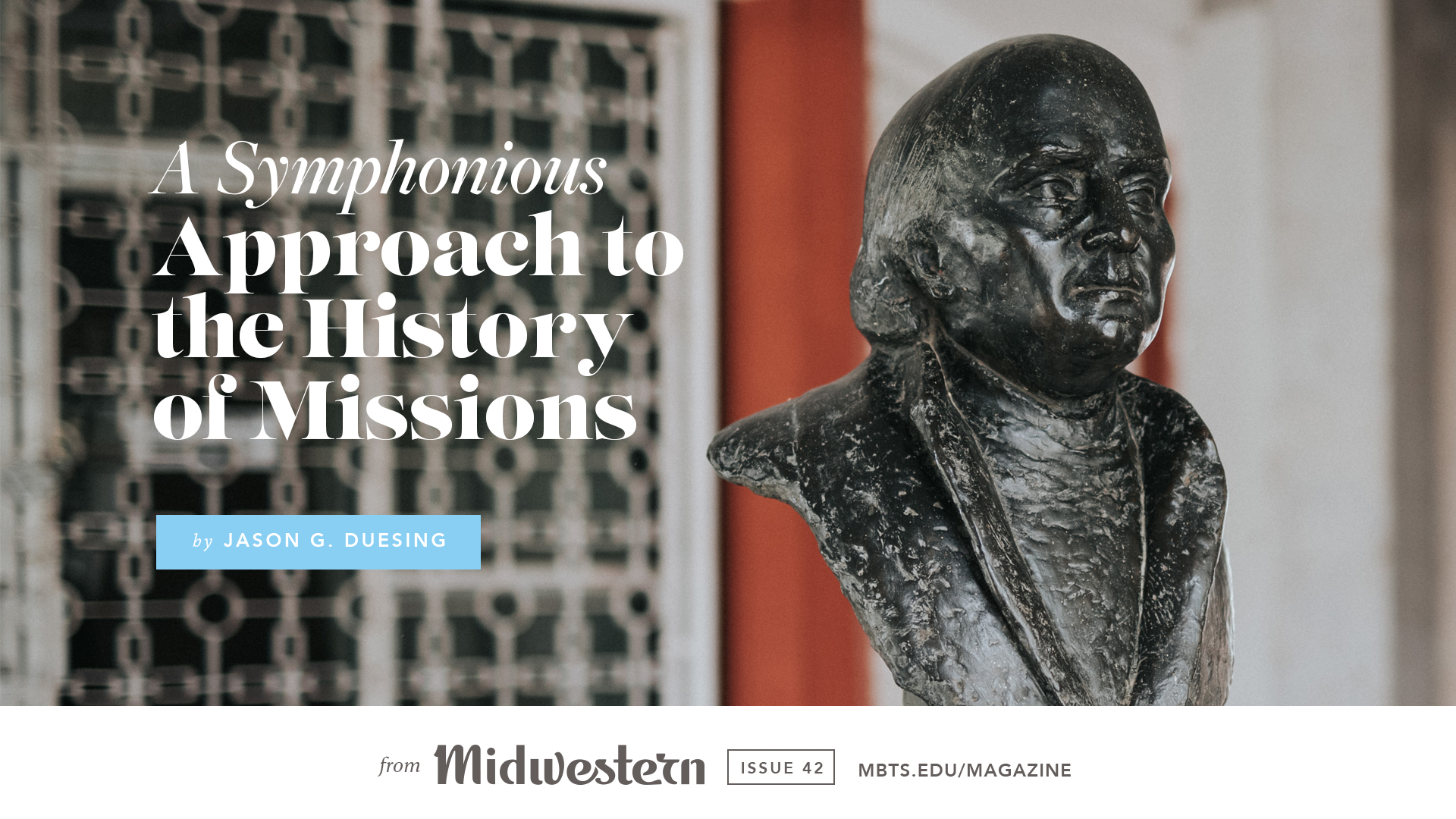
Who’s On First?
When historians classify historical figures in terms of who was first to do something, even when the figures did not think of themselves by such classifications, sometimes the historical accounts can read like the famous Abbott and Costello skit, “Who’s on First?” This is very much the case with the ongoing conversation surrounding who was the first modern missionary or who should be termed the “Father of Modern Missions.” Sometimes, these conversations sound, to me, like this:
Who was on the mission field first?
That’s what I am asking: who?
Exactly.
Exactly what?
What’s on second?
I thought Judson was second.
No, what’s on second. I don’t know is on third.
Who’s on first?
Exactly.
Who is on first, Liele or Carey?
Who’s on first. I don’t know Liele or Carey.
So you don’t know Liele, Carey, or who’s on third?
Who’s on first!
Ah!
Yet, what is taking place in this confused conversation about missions and history is important for it reveals that the entire story has not been told of who all helped propel Protestants to contribute to the growing task of global evangelism in the late 18th century. “Who’s first?” and “Why does it matter?”, are great questions to ask when assessing the history of missions, but I think we need further conversation about how we answer those questions.
Taking a shortcut to the end, I answer the “Who’s first?” question this way: George Liele (c. 1750-1820) was the first modern missionary, and it is right to consider William Carey (1761-1834) the father of modern missions, and Adoniram Judson (1788-1850) as the pioneer American missionary. However, to answer why it matters, I prefer to say more than just “Who’s on First.” Yes, who did what on which day is vital for understanding the historical task, but George Liele’s contribution is far greater than just that he was first, and I am afraid in historians’ helpful efforts to reclaim him, we’ve also limited him. And then there is the matter of how he, Carey, or, later, Judson considered themselves. What would they make of all these titles?
To help think about this further, I have found it helpful to review a brief background of the history of the beginnings of the modern missions movement in order to, then, suggest a new methodology for us to consider.
The Modern Missions Movement
From 1937 to 1945, church historian Kenneth Scott Latourette published his seven volume, A History of the Expansion of Christianity. What is remarkable about this massive undertaking is that three of the volumes are dedicated just to the 1800s. Following Latourette’s emphasis and organization, Ralph Winter classified the history of Christian missions into epochs, the last of which covering 1800-2000, he titled “Modern Missions.”
What then is pre-modern missions, or, what happened to missions after the Reformation?
Following the Reformation, Protestants were slow to assemble any kind of organized missionary approach that would rival the Roman Catholic orders. To be sure, the Reformers themselves, did engage in some global evangelism, but the movement could not yet sustain the transportation of churches or missionaries. In the seventeenth century, the German Pietist movement influenced Dutch Protestantism and shaped those sent as chaplains throughout their trading colonies. By the early eighteenth century, the Pietists shaped Count Nicolaus Ludwig von Zinzendorf who gave refuge to persecuted Moravian Christians. This colony would awaken to the missionary task taking the gospel to the West Indies, Greenland, the Americas, South Africa, Egypt, and Tibet.
The Moravian effort coincided with the Great Awakening in England and America through John Wesley, who had some connection to the Pietists. In New England among the Puritans, there had been some cross-cultural work done among Native Americans by John Eliot and David Brainerd. Both the accounts of this expansion of the gospel as well as further development of the need for participation in global evangelism were fueled by the writing and ministry of Jonathan Edwards, George Whitefield, and the Awakening. As Protestants entered the nineteenth century, they organized their efforts in several mission societies and agencies to enable their churches to fund and send their missionaries. Thus, as George Liele and William Carey were taking the gospel to other cultures in their respective parts of the world, they were doing so on the eve of what we know now as the modern missions movement.
The term “Father of Modern Missions” originated following William Carey’s death in an admiring biography by George Smith, The Life of William Carey (1885). Yet, had Carey been alive, he likely would have discouraged this assessment. When writing his Enquiry manifesto in 1792, he chronicled the spread of the gospel from the Apostle Paul to the Reformation. He then depicted the modern era by recognizing the work among Native Americans by Eliot, Brainerd, and Carey’s contemporaries, Mr. Kirkland and Mr. Sergeant. Carey included mention of mission work of the Dutch, and then lauded the work of the Moravian Brethren. Carey, it appears, knew he was taking up a baton of a movement already underway even as he organized and led a movement that would multiply itself and outlive him.
Yet, this is not to say that no one was aware of Liele’s contribution as the first Baptist missionary to cross-cultures with the gospel in Jamaica nine years prior to Carey. Many in England were aware due to the publication of Liele’s letters in John Rippon’s The Baptist Annual Register. While there is no evidence that Carey read The Register, there is a high likelihood that he did because of the notices about his own works that appeared at the same time. For The Register chronicled the first notice of the publication of Carey’s Enquiry in 1792, a notice concerning Carey’s ordination, and the minutes of the Northamptonshire Association that documented the formation of what would become the Baptist Mission Society. These reports are interspersed in and around the ongoing correspondence of George Liele to John Rippon, local pastor and editor.
Adoniram Judson, then, serves as the pioneer American Baptist missionary given his role in helping to organize the Baptist Foreign Mission Board following his departure for Burma in 1812. However, sorting out the chronology, while helpful, limits a full appreciation for the full contribution to modern missions of Liele, Carey, and Judson. A symphonious approach is needed.
A Symphonious Approach
Among Baptist historians, there has been an ongoing methodological discussion about how one is to best interpret the Baptist tradition. Some have argued for a single source or “monogenesis” of great authority that anchors the Baptist tradition, which I argue in Baptists and the Christian Tradition, is largely an unhelpful contribution, especially as it finds expression in ultra-successionist forms. Most have, instead, acknowledged that there is a multi-source or “polygenesis” influence that comprises the Baptist tradition. Baptists are a product of the Reformation, yes, but their organization formation comes in England later, for example. In addition, another historian, William Brackney, has argued that a better way is to think of the various epochs of the Baptist movement is a genetic approach that sees continuity across streams of Baptist thought. This idea of searching for shared DNA, if you will, has merit, but I am afraid it sometimes loses theological precision.
What does this have to do with an assessment of the beginnings of the modern missions movement? Instead of monogenesis, polygenesis, or a genetic approach, I present what I call a symphonious approach for assessing the modern missions movement. This era in history is, after all, a movement, and much like the musical use of that term, we see more similar themes: there are many diverse and complementary components that make up a symphony. For the symphony to achieve its desired sound, all must play their part. Symphonies usually are comprised of four movements that each tell part of the story at different speeds and intensity.
For example, when considering the Protestant Reformation, historians and theologians do not speak often in terms of who was the first Reformer or who is the Father of the Reformation. Rather, those events and people in church history comprised a symphonic movement. Like its musical counterpart, it had a prelude in Wyclif and Hus, struck its opening notes with Luther, and saw its development and full deployment in Zwingli, Calvin, and Cranmer. Complementing these major sections were a host of other Reformers, social and cultural events, and advancements in technology and translation, that, in their contexts and specific convictions, added to the color and depth of the symphony that was the Reformation.
Likewise, I argue, it is with the modern missions movement. The Reformers themselves played some parts of the initial piece, but the Moravians and others open the overture in its beginning. George Liele, then, represents the first section with a unique and influential contribution that many have overlooked, yet he mobilized and impacted many. Carey, shaped by all who went before gives a full, well-organized presentation, the DNA of such serves a refrain for later movements that include Americans Adoniram and Ann Judson and many other missions societies, organizations, and work.
Thus, as far as titles and assessing the right chronology of the movement, I am arguing that it is more helpful to think of the modern missions movement like other movements in church history and to minimize the emphasis on titles in favor of assessing all the component parts and their unique contributions that serve to make up the movement as a whole. When historians and theologians analyze the modern missions movement in the ways they quantify other movements in the history of Christianity, seeing these leaders and each playing unique parts in one grand symphony appears to allow their voices and legacies to have appropriate appreciation and ongoing influence. To put it another way, a symphonious approach to assessing the missions movement allows current researchers to see the full value and beauty of what the movement’s leaders were able to do in their lifetimes, not to mention all the supporting figures and trends that helped to strengthen the movement that have yet to be studied and shared.
That said, I realize many historians might respond to my clarifications and say, “Enough already, I don’t care who is on first or how is the best way to put it all together, just as long as the missions movement and its overlooked figures are studied and shared.” I would agree with that bottom-line sentiment, but then, also would point out that, “I don’t care”-—well, he is the shortstop.

